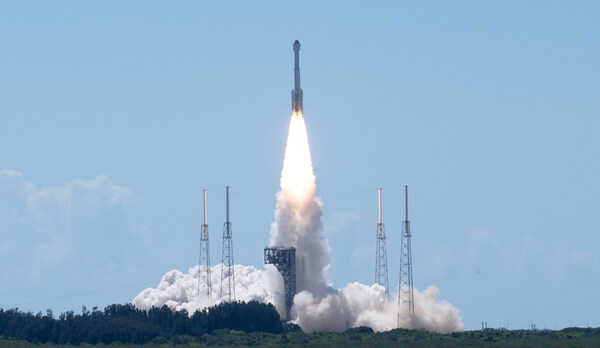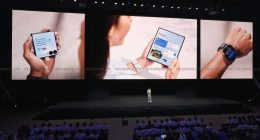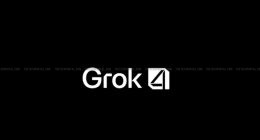After enduring years of development fraught with setbacks and delays, Boeing’s Starliner capsule finally reached for the stars on Wednesday. Carrying a veteran crew of astronauts Butch Wilmore and Sunita Williams, the spacecraft embarked on a historic mission to the International Space Station (ISS).
The Crew Flight Test mission, piloted by Indian-origin astronaut Sunita Williams and commanded by Butch Willmore, aims to test the capabilities of the Starliner spacecraft in crewed flight to the ISS. The mission, developed under a contract from NASA as part of the Commercial Crew Program, has been years in the making. Williams and Willmore, both seasoned astronauts with extensive training and experience, have prepared rigorously for this mission. Their training involved simulations and preparations for maneuvering the spacecraft to autonomously dock with the ISS, located over 400 kilometers above the Earth’s surface, for over a week.
While Wilmore is a seasoned space traveler with two previous missions under his belt, Williams holds the distinction of being the first person of Indian origin to fly aboard Starliner, as well as becomes the illustrious third astronaut to embark on a space mission for the US a total of three times. Both Wilmore and Williams have been tasked with evaluating Starliner’s performance during the 24-hour journey and week-long stay docked at the ISS. “When I reach the International Space Station, it will be like going back home,” Williams said. Prior to this, Williams spent 322 days in space and held a record for the maximum hours of spacewalk by a woman (a record that was later overtaken by Peggy Whitson). Apart from this, she already is the first person to finish a triathlon in space.
“This crew flight test represents the beginning of a new era of space exploration as we watch astronauts Wilmore and Williams put Boeing’s Starliner through its paces on the way to the International Space Station,” Ted Colbert, President and CEO of Boeing Defense, Space & Security, commented on the matter. “This is a great start. We look forward to getting the astronauts safely to the space station and back home.”
Liftoff! Go #AtlasV! Go Centaur! Go #Starliner!
Godspeed, Butch Wilmore and @Astro_Suni! pic.twitter.com/kTA8fjcLP7
— Boeing Space (@BoeingSpace) June 5, 2024
Developed by Boeing under NASA’s Commercial Crew Program, Starliner is a reusable spacecraft designed to ferry astronauts to and from the ISS. This innovative capsule boasts a capacity of up to seven passengers, offering a spacious environment for future space missions, and is carrying about 760 pounds (345 kilograms) of cargo. Beyond its passenger capacity, Starliner incorporates several features such as a weldless structure, a testament to advancements in spacecraft design and construction. For crew comfort and functionality during extended missions, Starliner is equipped with in-flight amenities like wireless internet and tablet technology for crew interface, as well as a pusher abort system that is designed to propel the capsule away from the launch vehicle in the event of a critical emergency during launch and ascent.
The path to Wednesday’s successful launch wasn’t without its challenges for Boeing, and the Starliner program has been plagued by years of delays and technical glitches. Previous launch attempts in May were scrubbed due to a faulty valve on the Atlas V rocket that Starliner sits atop, and in early June, a ground launch sequencer malfunction forced yet another delay. Still, with the successful launch of Starliner, the American space industry has entered a new and exciting era marked by renewed competition. Since 2020, SpaceX’s Crew Dragon capsule had been the sole provider for transporting astronauts to the ISS. Now, Boeing presents a viable alternative, offering NASA a second reliable option for future crewed missions. Elon Musk, CEO of SpaceX, also congratulated on the successful launch.
Congratulations on a successful launch! https://t.co/DiwBo6LheW
— Elon Musk (@elonmusk) June 5, 2024





